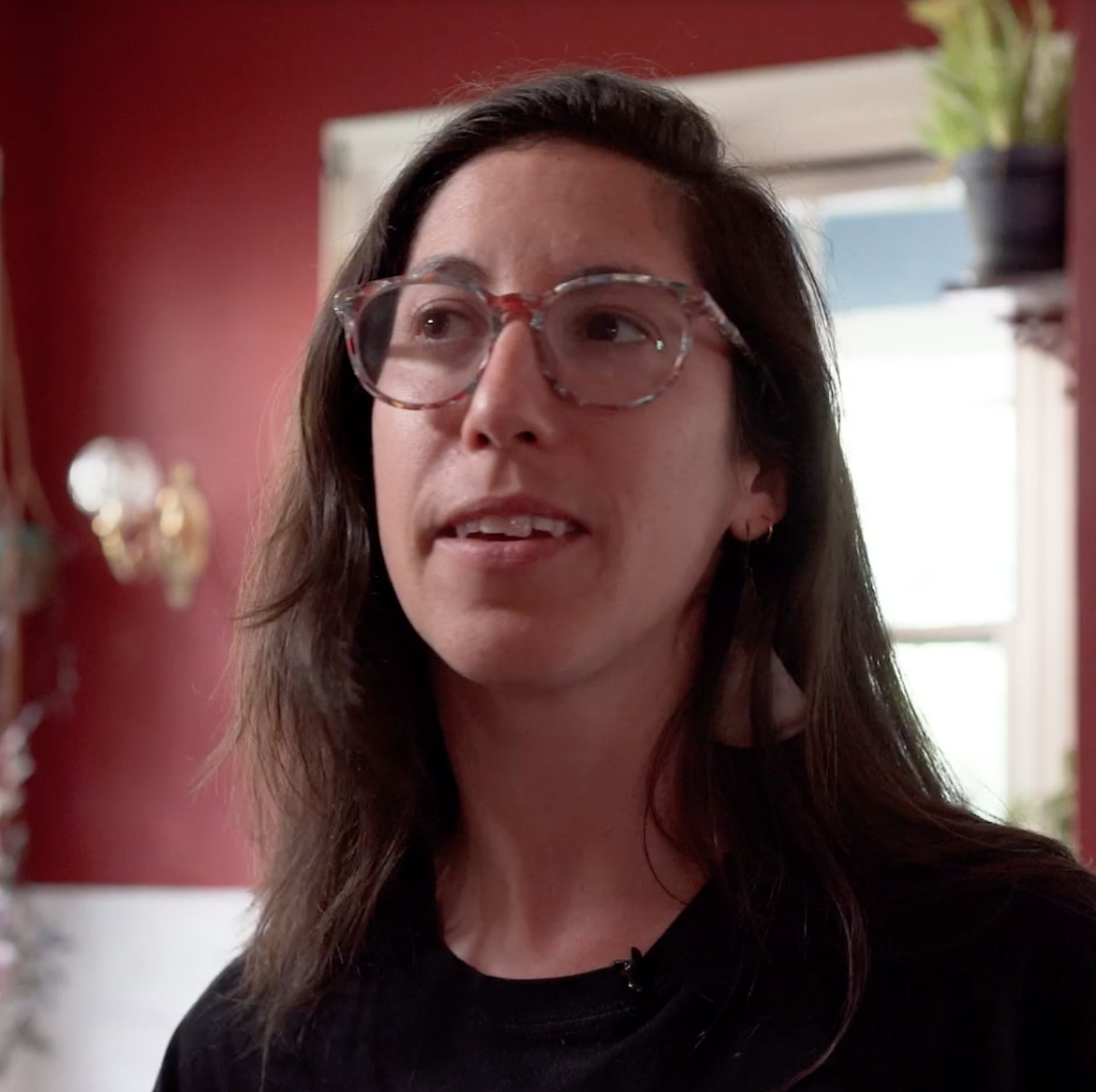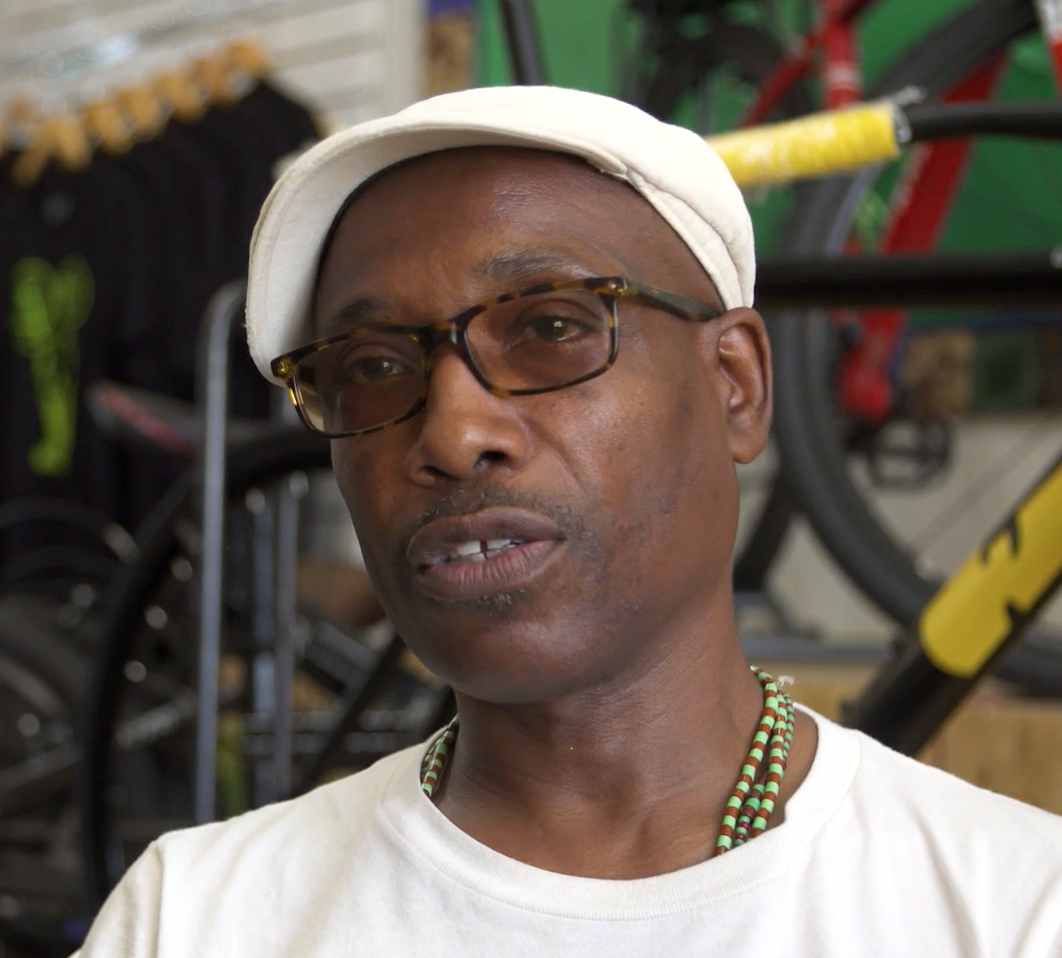
What is Active Transit? | Download the Guide | Creating Safer Streets for Vulnerable Road Users | Getting More Butts on Bikes | Organizing & Education | Meet the Leaders | More Projects & Resources
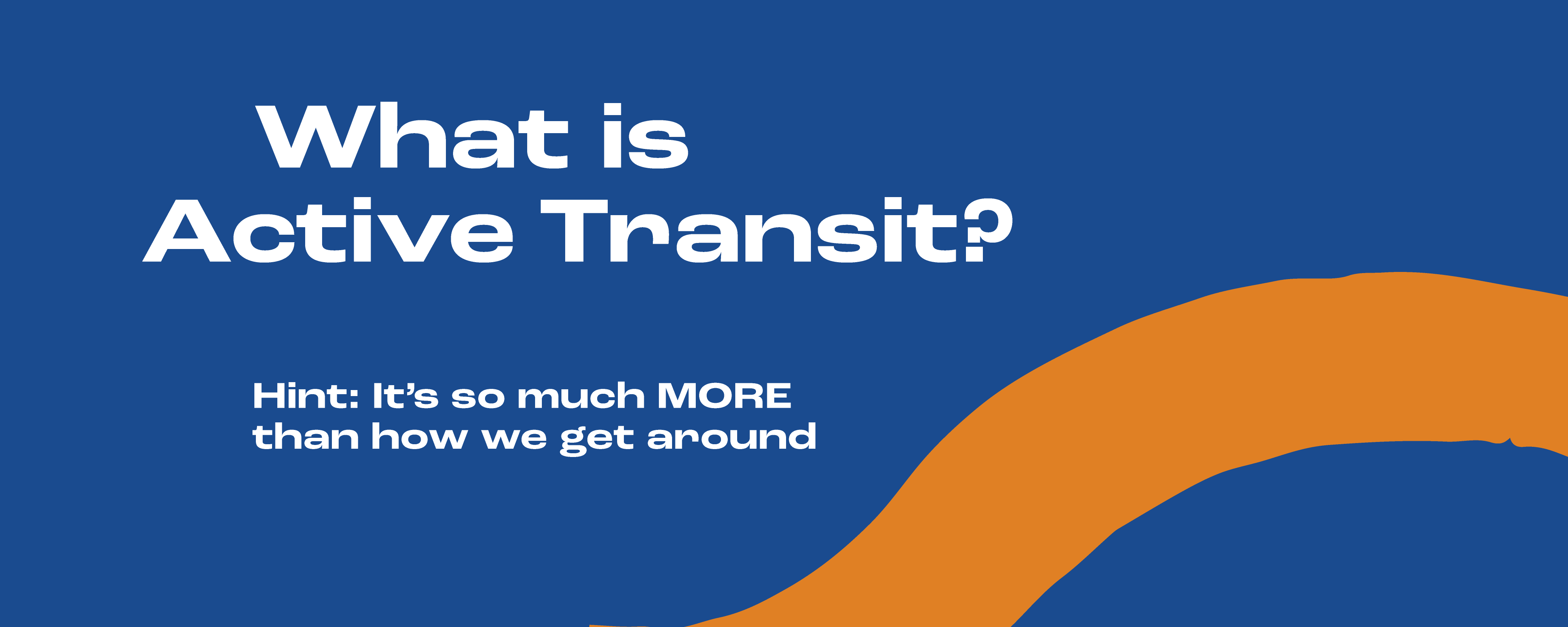
Transportation impacts every aspect of our lives, from getting groceries to getting to work on time. Our ability to get around is intertwined with our quality of life, our health, our economic opportunities and our environment. And our transportation systems shape our cities and towns - from streets built for cars and trucks to friendly, walkable places that invite us to meet our neighbors.
Active transit is transportation infrastructure that makes life better for people, places, and the environment. It includes non-car based transportation options such as walking, biking or taking public transportation, and the infrastructure that makes it safer and easier to opt into these activities.
At the root of active transit is transportation equity: the simple but radical idea that every person has a right to get around efficiently and safely in the place they live. The negative costs of a transportation system centered around cars has long fallen most heavily on low-income and BIPOC communities, from the destruction of neighborhoods for highway construction, to the health impacts of air pollution created by gridlock traffic, to the disproportionate number of pedestrian injuries and deaths in communities of color.
Reducing our communities' reliance on cars, and making our streets safer for those who walk, bike, and take transit, is a critical step in reducing our greenhouse gas emissions and combatting climate collapse. It is also the key to a more joyful, more connected community: research has found that people who walk, take transit, or ride a bike to work are happier than those who drive.
Download our FREE Active Transit Toolkit Guide
But wait, these are big changes that probably require a LOT of money, not to mention red tape! Can local residents really make a difference?Download our FREE Active Transit Toolkit Guide, or read on to meet some folks who have done just that! |
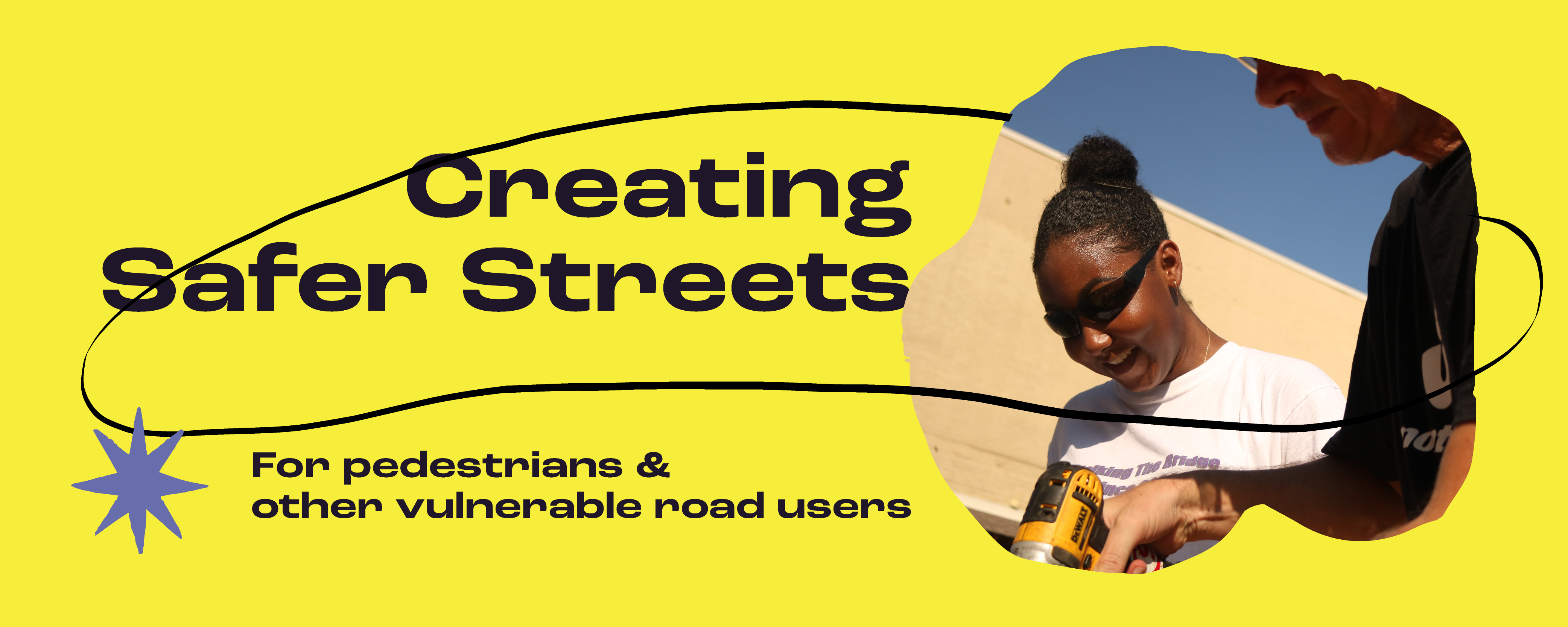
In too many of our communities, decades of car-centric planning and infrastructure investments have led to unsafe streets for pedestrians, cyclists, and other vulnerable road users. And the problem seems to be worsening: According to a recent study published by the Governors Highway Safety Association, pedestrian deaths are at their highest levels in 41 years. From 2010 to 2021, pedestrian deaths increased by 77 percent. In fact, according to the study, the United States is a “global outlier” in road deaths.
Undoing decades of car-centric planning to center active transit will take major investments from all levels of government. But making our streets safer and more equitable for those who walk, bike, and take transit is not all top-down solutions. It will also take committed organizing on the part of community groups and neighborhood residents themselves. After all, those closest to the problems are often closest to the solutions.
Across the country, ioby project leaders are working to re-stripe crosswalks, build new bike lanes, and make bus and train stops more accessible. They’re working with their block clubs to push for the installation of traffic circles and speed bumps, and to lower speed limits on streets where children play. They’re raising awareness of and celebrating the environmental benefits of active transit. And they’re organizing broad, intersectional coalitions to push for permanent changes on the city-wide level.
Safer Streets Case Study: Providence Streets Coalition
The Providence Streets Coalition (PSC) is an alliance of community organizations, local businesses, schools, and neighborhood associations that care about safe, sustainable, and equitable streets. It launched in 2019 after PSC founder Liza Burkin noticed the congestion that dominated Rhode Island’s cities while she worked as a pedi-cab driver. The traffic not only impacted the visitor experience: it had a huge impact on the town’s climate footprint, and the overall safety of people who did not or could not use cars.
Since then, the coalition has grown into more than 70 organizations representing a wide variety of residents, government officials, and community organizations. Together, they have championed the creation of more than 35 miles of urban trails and traffic calming initiatives — a huge accomplishment in a city that is 20 square miles! They also helped successfully advocate for the city council’s Green and Complete Streets Ordinance, which ensures that vulnerable road users of all ages are able to move safely around the city by law.
Their work emphasizes the impact that an engaged group of neighbors can have. As the coalition writes, “the streets of Providence belong to all of us. They are the veins that pump our community, economy, and family life.” Watch the video to hear Liza about how we can bring such transformative change to our neighborhoods and ensure safe roads for all. You can also read an interview with Liza and download the complete Active Transit Guide.
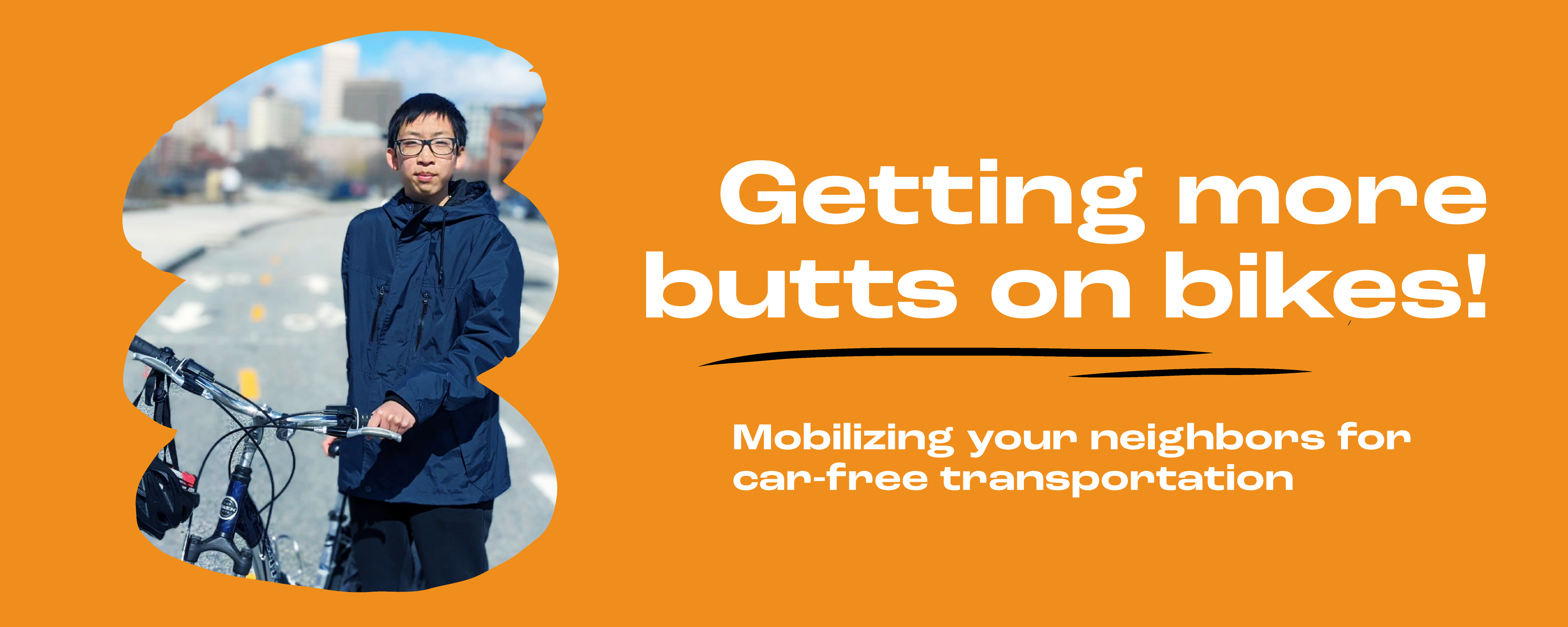
Riding a bike is one of the most effective and efficient ways to get around without a car. You can cover far more distance than walking—and it’s fun to explore a new neighborhood, connect with your community, or get out into nature.
Biking is also a huge untapped resource when it comes to Active Transit. According to a study by YouGov, 94 percent of Americans know how to ride a bike, yet more than 50 percent of Americans say they “never” or “rarely” ride.
Why not? Many would-be riders cite safety concerns. Most American cities are simply not designed with bikers in mind. This makes it dangerous for bikers to ride through high-traffic areas with no bike lanes for protection. Without this infrastructure, riding through a city on a bike can feel isolating - it becomes clear how much space is allocated for cars. That’s why many ioby project leaders have worked in their communities to provide safe biking infrastructure like pop-up or protected bike lanes and bike parking.
But those who do bike also benefit from the principle of safety-in-numbers. Simply put, the more bike riders are out on the street, the more visible the demand for safe biking infrastructure, and the more normalized this form of transportation becomes, and the more people want to opt in, creating a cycle. That’s why many ioby project leaders work to empower their neighbors to become cyclists—with learn-to-ride and bike safety classes, free bikes and equipment, and social rides.
Butts on Bikes Case Study: Ride On! Bike Co-op
Ride On! Bike Co-op is a bicycle shop and community space in South Los Angeles where community members can receive no-to-low-cost bike repairs. In addition to the physical shop, Ride On! provides bike riding lessons and advocates for a safer, more equitable transportation environment throughout car-centric Los Angeles.
The space was founded in 2015 by then grad-student Adé Neff, who became increasingly frustrated by the dangers of riding his bike around the city. “Even if I went to a grocery store or a market nearby, there was no place even for me to lock up my bike,” he says. This led him to work with a wide variety of organizations who were advocating for transportation equity in the city—and ultimately led him to open up his very own shop in the historically Black neighborhood of Leimert Park, Los Angeles. “Before I opened this job, I had to go eight miles to get my bike repaired,” he says.
Today, Ride On! advocates for a wide variety of initiatives, including a new initiative to provide 200 free e-bikes to residents of South LA. “People in South LA that ride bikes are invisible. You have the folks that work late at night at the restaurants, at the bars, and by the time they get home, a lot of the trains and a lot of buses have stopped running, and they still have to get home,” he says. The organization has also laid out plans to make several intersections safer for pedestrians and cyclists—and to transform Los Angeles into a world-class city for all street users, not only car owners. Watch the video to hear from Adé about how he started Ride On! and his dreams for the future of the city. You can also read a Q&A with Adé and download the complete Active Transit Guide.
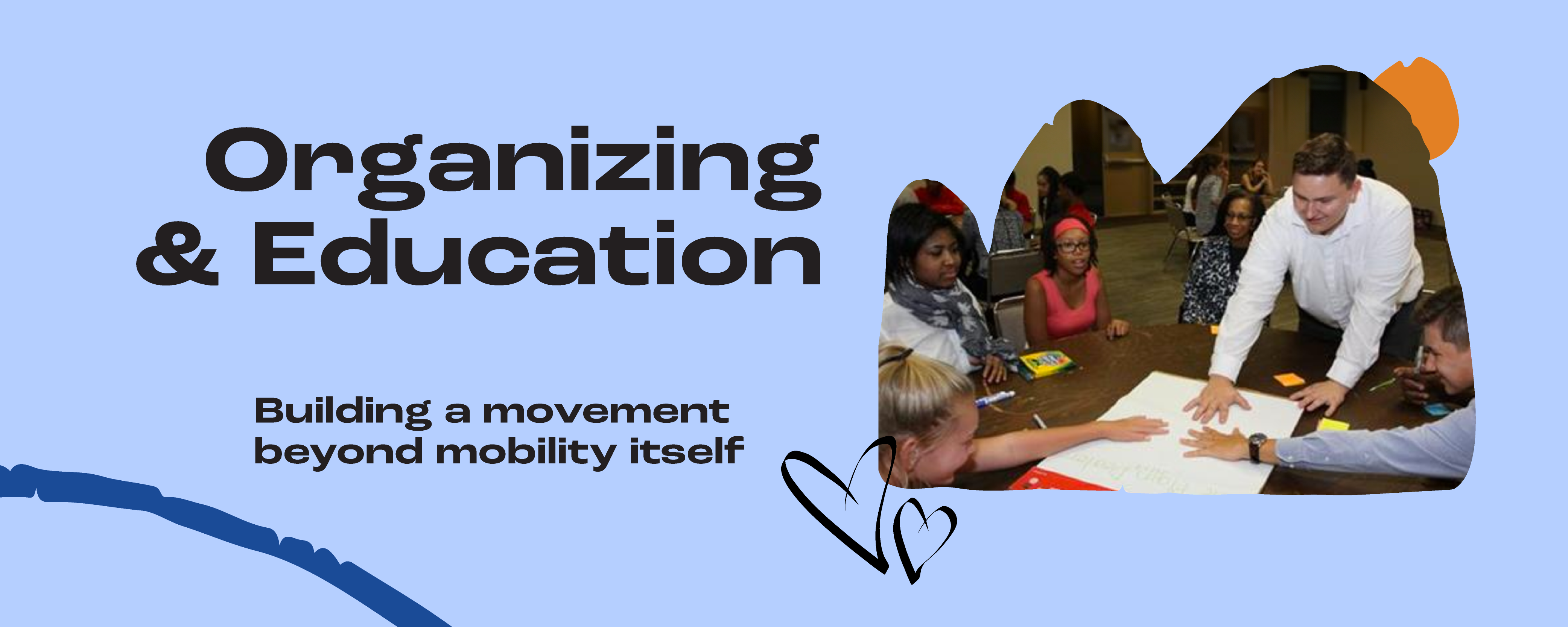
Organizing and education is the heart of any movement for positive change, for safe streets and active transit and beyond. Whether working on long-term advocacy for the investment of millions of dollars to build infrastructure, or running a weekend program to bring neighbors together, all ioby project leaders need to move at the speed of trust. There are no shortcuts to good movement-building, but without it, no transformation is possible.
Active Transit is a deeply intersectional issue, touching every aspect of community life from economic opportunity (what jobs can you reach by an easy commute) to racial justice (which communities bear the negative health impacts of air pollution from highways?) Those pushing for change are up against longstanding systemic forces, as well as ingrained social behaviors. The successful project leader knows to welcome diverse voices into the conversation, listen deeply, and connect with neighbors’ hearts and minds.
ioby project leaders who have most successfully organized for safe streets and active transit have been the ones think most broadly about how their issues intersect with other issues, from youth unemployment to access to mental health services. Active transit organizing and education is about looking at the world and imagining how you might address longstanding issues and unlock systemic solutions with a transportation lens. These leaders connect the dots between movements, revealing the ways that transportation impacts not just our lives but our communities and, ultimately, the world.
Organizing & Education Case Study: Trikes for Tykes
Trikes for Tykes emerged from heartbreak. A young child in Jo Ann Street’s neighborhood in Memphis, Tennessee fell off of their bike and passed away — a sudden tragedy that sparked Jo Ann and other leaders into action. They decided to host bicycle safety programs in their neighborhood, which taught children traffic signals and encouraged them to wear helmets when they rode. After seeing the joy that the rides sparked, they decided to fundraise for free bikes to ensure that any child in their community who wanted a bike could have one.
In many ways, this led to a full-fledged transformation. Today, Trikes for Tykes hosts bike sales for all age groups, safety clinics, and even bicycle rodeos where young people come together to race, swerve through cones, and show off their skills.
Through this work, Jo Ann has seen the community-wide impact that bike education can have. The program has been able to provide bikes to teenagers for easy access to their jobs; mitigate the over-reliance on cars in Memphis; and uplift the long legacy of Black cyclists in the city. Through her intersectional approach, Jo Ann’s impact has radiated out — revealing the ways that a transportation-first strategy can change lives on and off the road. Watch Jo Ann’s video, read an interview with Jo Ann and download the complete Active Transit Guide.

|
Liza Burkin |
Adé Neff |
|
Jo Ann Street |

More Active Transit Projects We Love
Saint Luke's Pointe Traffic Calming: Lucille White—or Ms. Lucille to the people in her community—is a longtime crossing guard at 113th and Martin Luther King Jr. Drive, in Cleveland. After spending years making sure young students got to school on time, she realized that more help was needed to keep her community safe. This led her to fundraise for “traffic calming measures,” which helped notify drivers that they were entering a school zone, keeping young students out of harm’s way.
CrossWalk Flags: Sometimes, the best ideas to increase pedestrian safety are also the simplest. In 2016, as pedestrian deaths continued to rise across the country, activists started to promote “crosswalk flags.” They placed colorful, reusable flags around their respective cities, which pedestrians could grab as they crossed the street. Once across, they left the flag for the next walker, ensuring that the flags moved back and forth, keeping people safe.
Walk this Way LA: Like the name suggests, Walk this Way LA helped South LA residents understand how long it would take to walk between different popular destinations in the city. As the activists note, many people choose not to walk in Los Angeles because they don’t have the relevant information at hand. “Studies have shown that just the simple act of translating "miles" to "minutes" is enough to encourage walkers to make a trip on foot.” Through clear, colorful signage, they made it clear that L.A. didn’t have to be a city exclusively dominated by cars.
#ChrisCrosswalk: On February 22, 2017, a tragedy unfolded in Memphis, Tennessee. Christopher Phillips, who lived in downtown Memphis his entire life and biked everywhere, was struck and killed by a car. Activists decided to take action in honor of Chris and all victims of pedestrian fatalities. They set out to expand the pedestrian zone in Overton Square West, where Chris was killed, by 200 yards and to create a colorful “no traffic” street sign. The project was successful: they have since held drag performances, brunches, and fundraisers in the pedestrian zone.
Nuestra Aveida: Cesar Chavez Reimagined: This partnership brought together residents to reimagine Cesar Chavez Avenue, a central transportation corridor in East Los Angeles. Through a daylong activation, organizers gathered materials—such as paints and chalk—to help neighbors reimagine the street, with a specific emphasis on pedestrians, bikers, and people who use public transportation.
Brilliant Underpass on the Mill River Trail: If you live in a city, you know what it's like to walk home beneath a poorly lit underpass. It can make you feel unsafe and deter you from walking altogether. That’s why organizers in New Haven got together to transform this “dark creepy underpass” into a vibrant walkway. Since dozens of students and residents crossed the underpass each day, this transformed their experience and made the space more welcoming and alive.
Bike Repair Miami: Bike Repair Miami aims to take the uncertainty out of riding a bike. As a collective, they installed three public repair and air pump stations along popular bike corridors in Miami. This meant that if your tire ran out of air or your seat became loose, you wouldn’t be stranded. For many people, concerns about bike malfunctions means they elect not to ride. Through this project, Bike Repair Miami ensured that biking would be as reliable and accessible as driving a car.
Bicycle Stories: For many people who desire to bike but didn’t grow up in families that did (this writer included!), making the decision to start can feel hard—impossible even. Through “2 Bicycle Stories,” students at International High School in Manhattan created a documentary about their shared love of bikes. Through storytelling, they opened up a dialogue to emphasize that biking is for everyone, whether you’ve biked for years or are hopping on for the first time.
WE Bike: Women’s Empowerment Through Bicycles! When Liz J. started WE Bike, she writes she was “interested most in creating a space for women who didn't consider themselves cyclists, felt intimidated in bike shops and on the street and was looking for a supportive way to ride that didn't involve mandatory spandex.” Hence, WE Bike, which has more than 100 members and aims to increase feelings of confidence in women both on and off the road.
Jersey City Bike Racks: The age-old question of being a devoted cyclist: Where do I put my bike once I arrive at my destination? Through a partnership with the Jersey City government, Sustainable Jersey City, Bike JC and the Jersey City Art School, these neighborhood leaders installed 275 bike racks around the city. This incentivized biking and increased awareness for bikers in the city. Win win!
Arapahoe Street Protected Bike Lane: In order to increase safety and the appeal of biking in Downtown Denver, these activists created a series of protected bike lanes. The lanes start in the center of the city and radiate out, forming an interconnected (and protected) way for cyclists to move around. The street was chosen after a comprehensive planning process with community and government input.
Cleveland Refugee Bike Project: To support the economic well being of refugees in Ohio, neighborhood leaders came together to provide free bikes and lessons. This supported the refugees they partnered with as they navigated life in the United States, and meant that increasing public transportation rates or drivers licenses would not serve as a barrier to opportunity.
Delivering Justice: In New York City, food delivery workers are a staple of everyday life. They traverse thousands of miles on their bikes each year—but are often left out of biking communities and face obstacles such as unsafe conditions, ticketing, and harassment. Delivering Justice utilizes a participatory research model to understand their needs through surveys and interviews, with the ultimate goal to improve public policy to protect delivery workers.
Kids Love Bikes Campaign: Kids Loves Bikes is based in Knoxville, Tennessee and has three primary goals: to teach children bike safety, increase the number of children who know how to ride bikes, and provide much-needed free bike maintenance. Since their inception, they have supported more than 100 kids to get their butts on bikes!
YES for a Healthier LA: YES was a youth-driven one-day event that took place in South Los Angeles. During the event, young leaders reimagined how public streets in Los Angeles could better fit their needs, including more opportunities for biking, walking, and access to public transportation. They also designed and created temporary street signs to increase safety for vulnerable road users.
El Puente Bike Club Youth Bike Summit: The Bike Club at El Puente Academy for Peace and Justice emerged based on a handful of teachers' passion for bikes—and quickly expanded into a passionate group of students who loved to ride. Together, they attended the Youth Bike Summit in Seattle, Washington, where they met other youth leaders passionate about biking, climate justice, and youth-driven change.
Walk Austin is Making it Official: Walk Austin aims to make the Texas capital more walkable—transitioning away from cars as the expected mode of transportation and toward two feet. They support design features that make Austin more pedestrian friendly, including safe crossings, improved connectivity, and a denser mix of land uses.
Additional Resources:
- How to pilot a car-free weekend street closure in your neighborhood
- How to help peds walk safely with Crosswalk Flags
- How to encourage healthful walking with helpful signage
- A Citizen’s Guide to Slowing Down Traffic on Your Street
- Parachute Canada’s Guide to Improving Pedestrian Safety
- A Resident's Guide for Creating Safer a Communities for Walking and Biking
- How community engagement can increase bicyclist and pedestrian safety
- Trick Out My Trip: Ten Rider-Led Projects to Rethink How We Ride
-
How Our Streets Minneapolis created the Whittier Lyndale Bikeway
-
The National Association of City Transportation Officials Urban Bikeway Design Guide

ioby’s Active Transit Toolkit was made possible with support from the Summit Foundation.
Ready to make positive change in your community?




